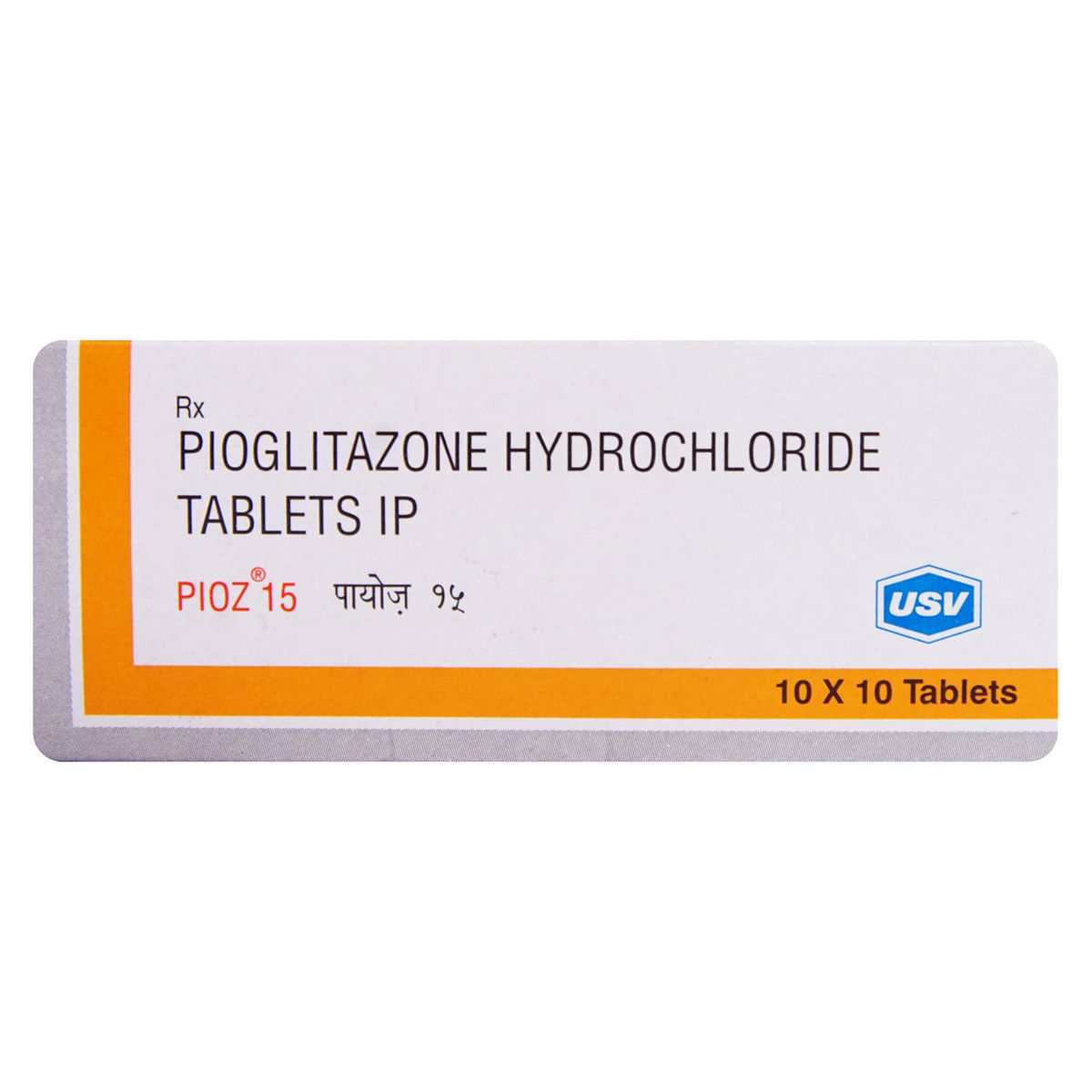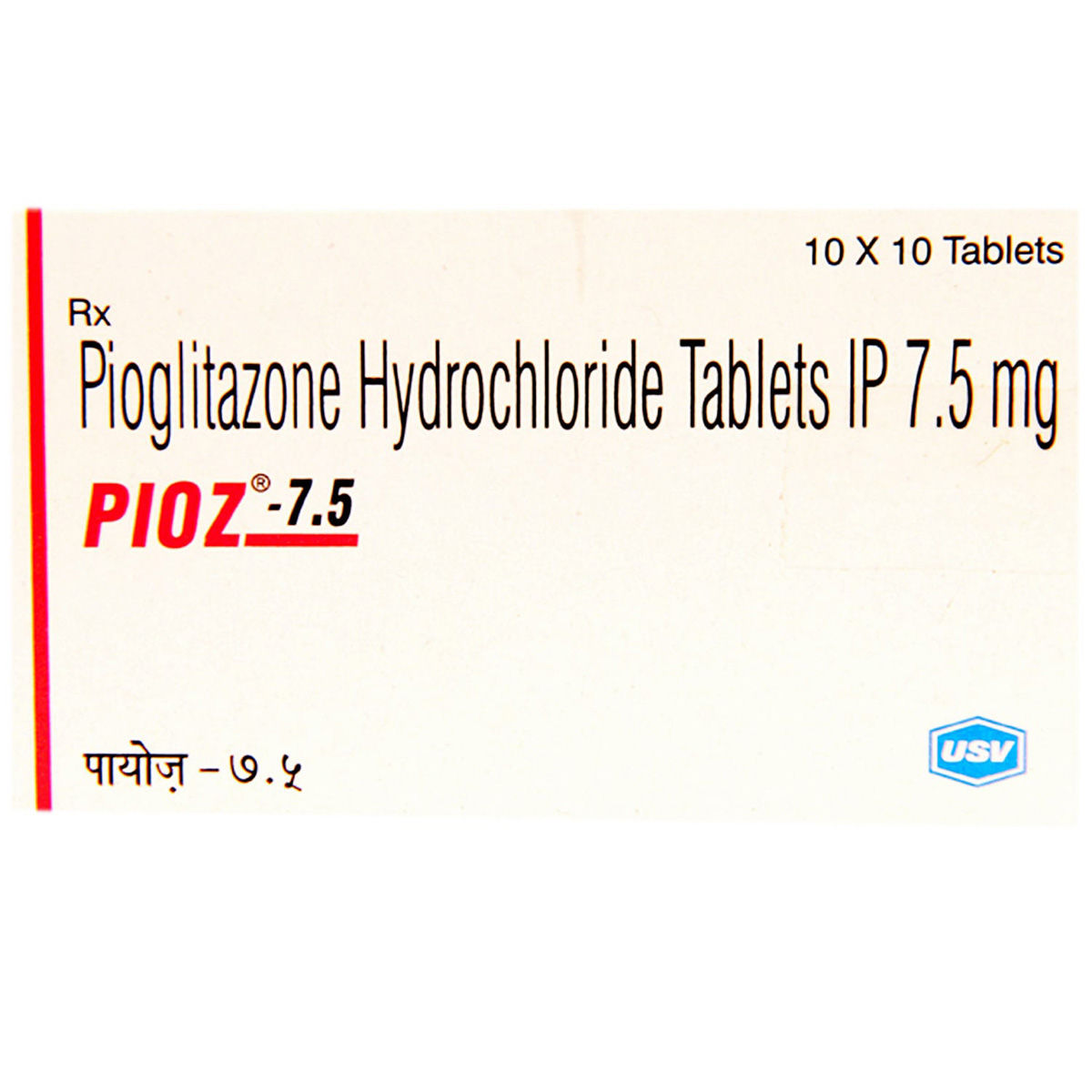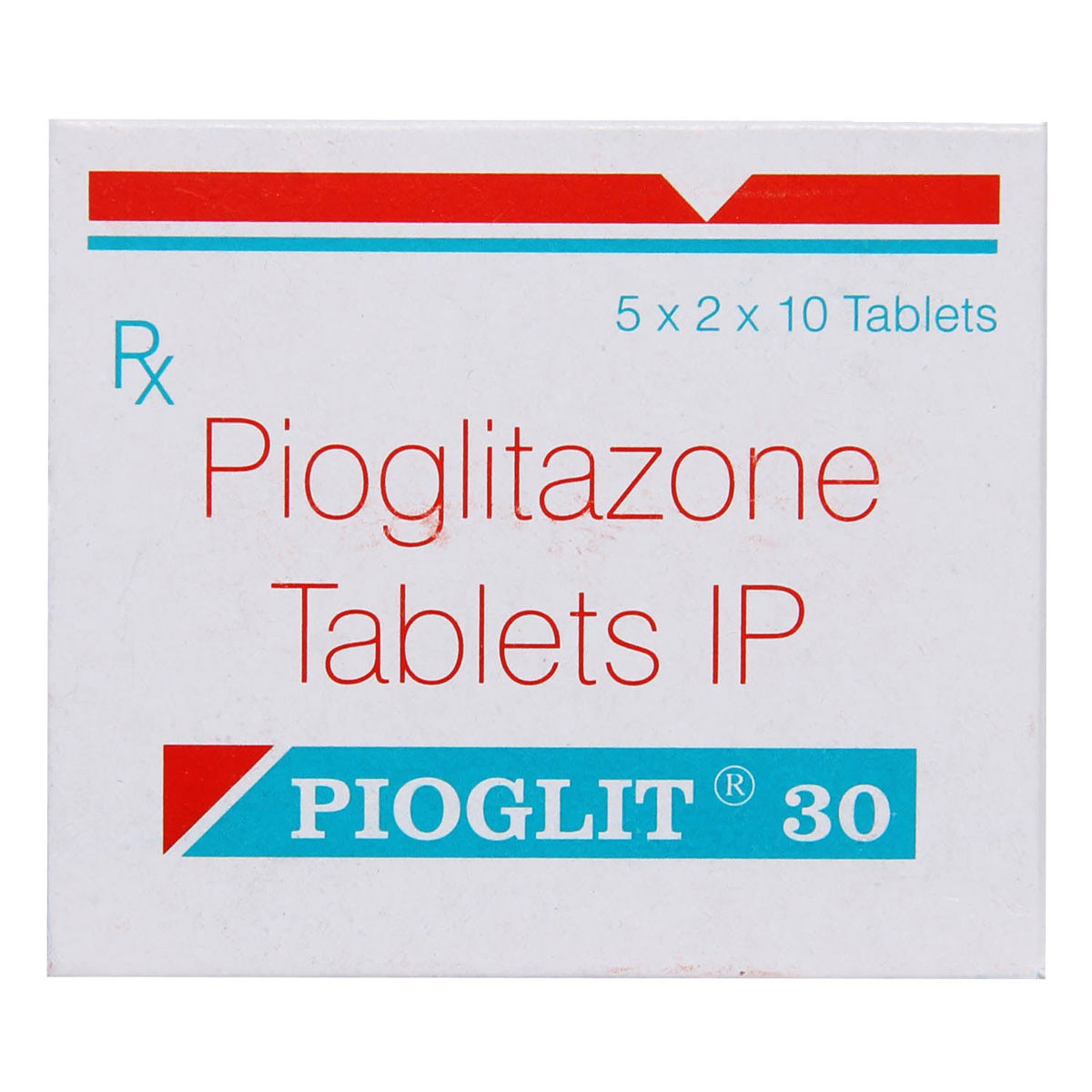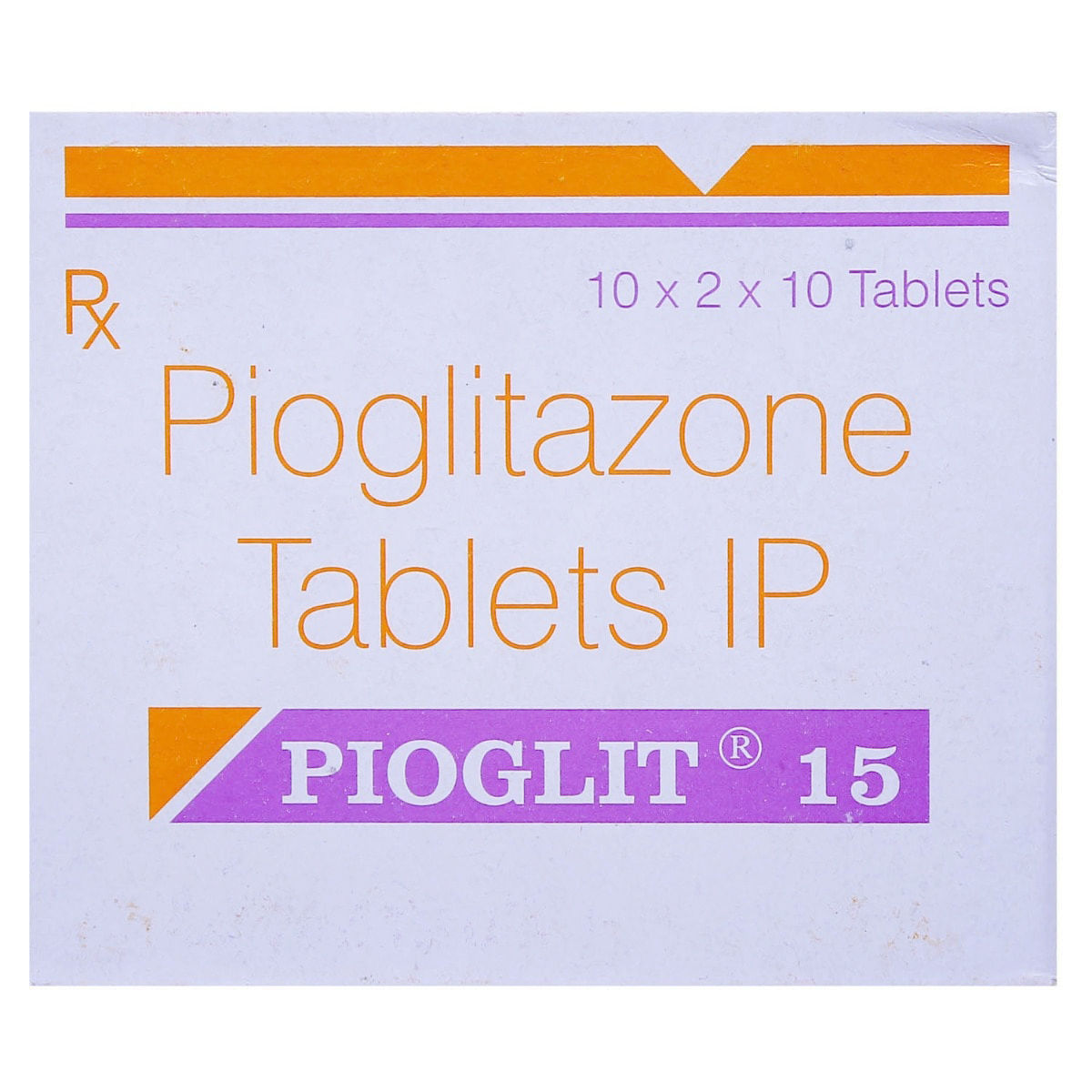About PIOGLITAZONE+METFORMIN
PIOGLITAZONE+METFORMIN is a combination drug consisting of Pioglitazone (Thiazolidinediones), and Metformin (Biguanides) which are called anti-diabetic drugs & used to lower blood sugar levels in diabetic patients. Type 2 diabetes mellitus used to be known as 'non-insulin-dependent diabetes mellitus (NIDDM)' or 'maturity-onset diabetes'. Type 2 diabetes develops if the body does not produce enough insulin, or where the insulin that your body makes does not work as well as it should. It can also develop if the body produces too much glucagon. Insulin is a substance that helps to lower the level of sugar in your blood, especially after meals.
PIOGLITAZONE+METFORMIN is a blood sugar-lowering drug which contains a combination of Pioglitazone belonging to the class of thiazolidinediones & Metformin belonging to the class of biguanides. Pioglitazone decreases blood sugar and reverses the effects of Type II diabetes by activating switches (PPAR) inside cells to take up free glucose from blood and decrease its levels in blood. Metformin on the other hand decreases blood sugar by decreasing its formation and increasing its consumption by cells thereby decreasing high blood sugar levels. PIOGLITAZONE+METFORMIN is used in adults to treat type 2 (non-insulin dependent) diabetes mellitus when treatment with metformin alone is not sufficient.
PIOGLITAZONE+METFORMIN should be taken with food to avoid an upset stomach. PIOGLITAZONE+METFORMIN should be taken at the same time of the day each time for best results. For better advice, your doctor will decide, what dose should be taken and it can change timely depending upon your condition. Some people may stomach ache, feeling sick (Nausea), vomiting, diarrhoea, loss of appetite, localized swelling (oedema), weight gain, headache, respiratory infection, numbness, taste disturbance etc . Most of these side effects of PIOGLITAZONE+METFORMIN do not require medical attention and gradually resolve over time. However, if the side effects persist or worsen, please consult your doctor.
PIOGLITAZONE+METFORMIN should not be stopped even if you feel better, without consulting your doctor as sugar level keeps changing. If you stop taking PIOGLITAZONE+METFORMIN abruptly, it may increase your sugar levels which could further increase the risk of eyesight loss (retinopathy), kidney (nephropathy) and nerve damage (neuropathy). PIOGLITAZONE+METFORMIN should not be taken if you have type 1 diabetes mellitus, severe kidney or liver disease. Please inform your doctor if you have any heart disease, is or planning to get pregnant or breastfeeding.
Uses of PIOGLITAZONE+METFORMIN
Type II diabetes (Non insulin-dependent diabetes).
Medicinal Benefits
PIOGLITAZONE+METFORMIN lowers blood sugar in type II diabetic patients (Non insulin dependent ) & prevents diseases of the heart, kidneys, eyes & blood vessels in feet, which happens due to persistently high levels of blood sugar in diabetic patients. PIOGLITAZONE+METFORMIN plays a vital role in controlling blood sugar levels and prevents serious complications of diabetes like eyesight loss (retinopathy), kidney (nephropathy), nerve damage (neuropathy), diabetic foot ulcer and delayed wound healing. PIOGLITAZONE+METFORMIN lowers blood sugar due to activation of cell switches (PPAR) to take up free glucose from blood & use it for energy production (Pioglitazones) & decrease production of glucose inside liver (Metformin) .
Directions for Use
Storage
Side Effects of PIOGLITAZONE+METFORMIN
- Diarrhoea
- Loss of appetite
- Headache
- Nausea
- Vomiting
In-Depth Precautions and Warning
Drug Warnings
PIOGLITAZONE+METFORMIN should not be used in patients with type 1 diabetes or with diabetic ketoacidosis. Some diabetic patients, while taking PIOGLITAZONE+METFORMIN, might develop a rare but serious condition called lactic acidosis. In this condition, there is too much lactic acid accumulated in the blood that can damage the working of your liver and kidney required for the elimination of excess lactic acid from the blood. Before you start taking PIOGLITAZONE+METFORMIN, tell your doctor if you’ve ever had pancreatitis (inflammation of the pancreas), kidney disease, and low vitamin B12 level. PIOGLITAZONE+METFORMIN, when used with insulin, may extremely lower the blood sugar level leading to hypoglycemia condition, which can be fatal. In this case, your doctor may adjust the dose by lowering the dose of insulin or PIOGLITAZONE+METFORMIN. Prolonged intake of PIOGLITAZONE+METFORMIN may lower your thyroid-stimulating hormone (TSH); hence, an annual check-up of TSH is recommended. In rare cases, you may also develop a serious skin reaction known as bullous pemphigoid that requires immediate medical attention. Tell your doctor if you are going to have a diagnostic test with an injection of dye or X-ray contrast agent. The use of PIOGLITAZONE+METFORMIN should be stopped for a short time before having an X-ray procedure.
Drug Interactions
Drug-Drug Interaction: PIOGLITAZONE+METFORMIN interacts with heart medications like (propranolol), pain killers (aspirin, ibuprofen, and celecoxib), high blood pressure-lowering pills (nifedipine, captopril, enalapril, lisinopril), thyroid hormones (thyroxine), antacid (cimetidine), or certain medicines affecting the nervous system.
Drug-Food Interaction: Intake of excessive alcoholic beverages may increase the chance of a life-threatening condition known as Lactic Acidosis. So, avoid intake of alcoholic beverages with PIOGLITAZONE+METFORMIN.
Drug-Disease Interaction: People affected with heart, liver, kidney diseases (like congestive heart failure and myocardial infarction), vitamin B12 deficiency, and alcoholism should avoid intake of PIOGLITAZONE+METFORMIN.
Drug-Drug Interactions Checker List:
Safety Advice

Alcohol
unsafeNot recommended with alcohol as it may result in harmful decrease or increase in levels of blood sugar depends on how much alcohol a patient has consumed.

Pregnancy
cautionNot recommended in pregnancy. PIOGLITAZONE+METFORMIN treatment should be stopped and replaced with any other alternative drug from other blood sugar-lowering agents on recommendation of a doctor. You must tell your doctor if you are pregnant, think you may be pregnant or are planning to have a baby.

Breast Feeding
cautionNot recommended in breastfeeding mothers. Do not use PIOGLITAZONE+METFORMIN if you are breastfeeding or are planning to breast-feed as doctor's consultation is required.

Driving
safe if prescribedSafe to use during driving or operating heavy machinery. This medicine will not affect your ability to drive or use machines but care is to be taken if you experience abnormal vision or anything that affects your ability to drive.

Liver
cautionPIOGLITAZONE+METFORMIN should be used with caution in patients with liver disease as PIOGLITAZONE+METFORMIN has been found to cause harmful interactions in them. Doctors recommendation is required before taking this drug.

Kidney
cautionPIOGLITAZONE+METFORMIN should be taken with caution in patients with kidney disease. In rare cases, serious interaction has been found in kidney patients called lactic acidosis thus doctors consultation is required before taking this drug.

Children
unsafeNot recommended in children below 12 years of age. Use in children and adolescents under 18 years is not recommended. Consult a doctor for better alternatives blood sugar-lowering agents in diabetic children.
Habit Forming
Diet & Lifestyle Advise
- Fill your half plate with starchy veggies, a quarter with proteins, and a quarter with whole grain.
- Eat at regular intervals. Do not take a long gap between a meal or snack.
- Monitor your blood sugar level regularly especially when there are lots of fluctuations.
- Invest at least 150 min of moderate-intensity physical activity or one hour and 15 minutes of high-intensity exercise every week.
- Lose weight gradually to achieve a healthy body mass index (18.5 to 24.9).
- Replace refined carbohydrates containing foods with whole grain foods and increase the intake of fruits and veggies and other fibre-enriched foods.
- Reduce intake of saturated fat (or hidden fats) in food like chips, crisps, pastries, biscuits, and samosas. Choose omega 3 fatty acid-containing oils for daily cooking. For frying, you can use palm oil, mustard oil, groundnut oil, rice bran oil, and safflower oil.
- Do not take stress as it may elevate your blood sugar level. You can adopt stress management techniques like mindfulness to control stress-related blood sugar changes.
- Opt for low-fat dairy products (low-fat yoghurt, fat-free milk, and cheese, etc.).
- Keep your blood pressure as normal (140/90) as possible. As it reduces the risk of cardiovascular diseases in diabetes patients.
Special Advise
Contact your doctor immediately if you have nausea, vomiting, kussmaul breathing (laboured and deep), and generalised weakness which are symptoms of Lactic acidosis, a very rare but serious metabolic complication.
Patients Concern
Disease/Condition Glossary
Type 2 diabetes is a condition where the body is unable to make sufficient insulin, or the insulin that it makes doesn't work properly or utilized by our body. This can cause high blood sugar levels (hyperglycaemia). Symptoms of type 2 diabetes include increased thirst, frequent urination, slow , increased hunger, fatigue, and blurred vision. In some cases, there may be weight gain while in rare cases weight loss may be observed. The complication of type 2 diabetes also includes neuropathy (nerve problems), nephropathy (kidney problems), and retinopathy (damaged retina of eyes or blindness), loss of limbs, sexual dysfunction, and increase the chance of heart attack or stroke.




